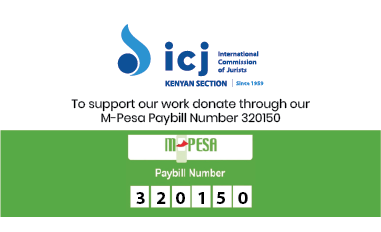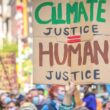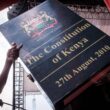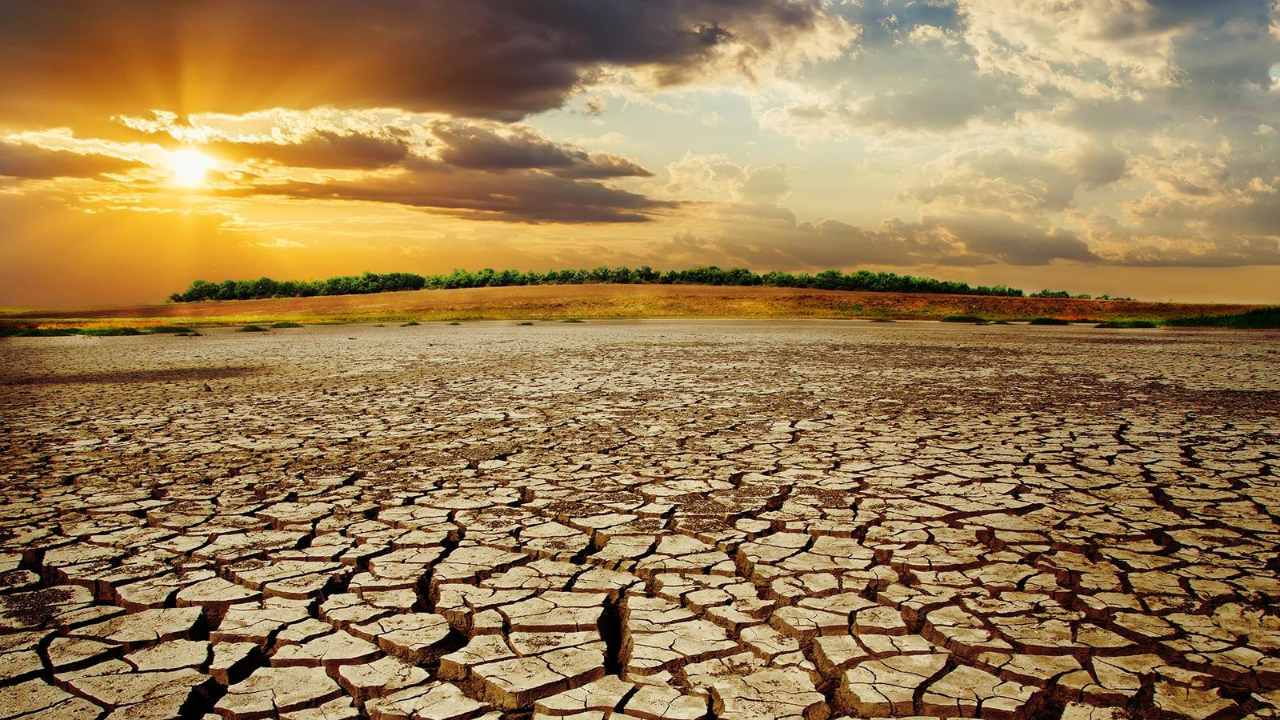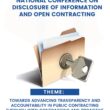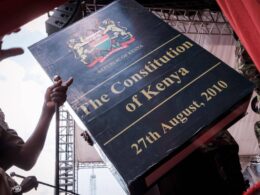By Julie Matheka
1.0 Introduction
Gender mainstreaming was acknowledged as an indispensable strategy for achieving gender equality at the 1995 Beijing Platform for Action. Since then, governments have made substantial efforts in developing gender-responsive policies and implementation strategies.
The year 2015 marked a number of pivotal achievements for gender and sustainable development. An ambitious agenda to guide development action for the next 15 years[1]was launched through the 17 Sustainable Development Goals (SDGs), putting a much-needed spotlight on poverty, inequality, and violence against women as key challenges of the 21st century. The 2015 Paris Agreement also calls for gender equality and women’s empowerment, and its provisions on adaptation and capacity-building efforts urge member states to adopt gender-responsive approaches. Further, many Intended Nationally Determined Contributions (INDCs) submitted to the United Nations Framework Convention on Climate Change (UNFCCC) as part of the implementation regime of the Paris Agreement reflect gender priorities in their pledges for climate action.[2]
- Impact of climate change on the poor, marginalized and vulnerable in society.
Climate change is perhaps the greatest threat to sustainable development. Earth temperatures have exceeded global annual averages for 39 consecutive years – the temperature of Earth for the year 2015 was the hottest in recorded history. According to the Intergovernmental Panel on Climate Change (IPCC), many observed impacts of the changing climate, such as sea-level rise, are happening more quickly than previously predicted, threatening coastal communities and critical infrastructure by increasing the frequency of disaster events, including flooding and storms. Impacts are being felt in all corners of the world – extreme weather events, heatwaves and droughts have increased in frequency and intensity, often with damaging effects to agriculture, fishing and other livelihoods. Climate change can jeopardize gains made by the global community in important domains such as food security and access to health and education.[3]
The adverse impacts of climate change however challenging to the general society continue to overly burden the poorest and the most vulnerable, especially poor women. Despite growing recognition of the differential vulnerabilities as well as the unique experiences and skills women and men bring to development and environmental sustainability efforts, women still have less economic, political and legal clout and are hence less able to cope with – and are more exposed to – the adverse effects of the changing climate. On the other hand, women are powerful agents of change and continue to make increasing and significant contributions to sustainable development, despite existing structural and sociocultural barriers. [4]
Although the effects of climate change on ecosystems and livelihoods vary by region and season, they are harsher on those living in already marginal conditions.[5]Moreover, these changes could exacerbate chronic environmental threats (such as deforestation, water scarcity and land degradation) that most affect the poorest.[6]For example, around 350 million people, mostly poor, live in or near forests on which they rely for their livelihoods – thus, climatic stress on forests could hurt the poor.[7]Similarly, around 1.3 billion people who live in fragile ecological areas (e.g., arid zones, on slopes, in areas with poor soils or in forest ecosystems) continue to see their livelihoods endangered from biodiversity loss exasperated by climate change.[8]
The poor and other marginalized segments of society are especially vulnerable to climate change since their livelihoods are often highly dependent on natural resources that are sensitive to climate variability.[9]Further, these groups also lack the resources needed to weather harsh climatic impacts (e.g., better houses, drought resistant crops). This diminished adaptive capacity makes them even more vulnerable, forcing them to engage in unsustainable environmental practices such as deforestation in order to sustain their well-being.[10]
- The Intersection of Climate Change and Gender
The poor and marginalized segments in many societies (women, the elderly, immigrants, indigenous groups, etc.) are structurally vulnerable.[11]Climate change impacts men and women differently, largely due to their gender-differentiated relative powers, roles and responsibilities at the household and community levels. Women tend to be overly burdened with household work and caring for children, the sick and the elderly.
Disparities in economic opportunities and access to productive resources also render women more vulnerable to climate change because they are often poorer, receive less education, and are not involved in political, community and household decision-making processes that affect their lives. Women tend to possess fewer assets and depend more on natural resources for their livelihoods.
The law in some instances creates an enabling environment for the disparity, For example, women do not always enjoy the same rights as men to land, a crucial resource for poverty reduction, food security and rural development. Women make up more than 40% of the overall agricultural labour force in the developing world (50 percent or more in parts of Africa and Asia) but own between 10% and 20% percent of the land.[12] Poverty, along with socio-economic and political marginalization, therefore cumulatively put women in a disadvantaged position in coping with the adverse impacts of the changing climate.
Cognizance has been taken of the disproportionate impact that climate change poses to women and other vulnerable groups. The various legislative, policy and strategic frameworks on climate change available at the global and regional level is a tacit acknowledgement of the seriousness of the problem and the role of women in adaptation and mitigation strategies. The United Nations Framework Convention on Climate Change has included a focus on addressing women’s rights and gender equality with respect to climate change mitigation and adaptation strategies.
In Africa, the African Union is committed to addressing climate change issues with a gender perspective. Consequently, African countries have formulated their respective climate change policies, strategies and action plans as well as green growth and low carbon strategies aimed at integrating climate change considerations into development and sectoral plans with a gendered perspective. Kenya, Uganda, Tanzania and Rwanda are among the East African States, which have followed suit by responding to the African Union commitments to the course by developing several legislative and policy frameworks to aid the course addressing climate change.Tweeted by 19
4.0 Review of the Laws in East Africa through gendered lenses
4.1 Kenya[13]
Kenya is among the first African countries to develop legislation and policies that promote the participation of women in climate change activities[14]. In line with the Constitution of Kenya which has a climate change and a gender equity agenda, Kenya has made great strides to realising both[15]. Kenya has other climate change policies have mentioned gender and women’s rights issues, although not in detail. The Kenya National Climate Change Action Plan also incorporates and addresses gender and women’s issues. The importance of women in leadership is also immediately observable at the policy level and at the implementation level. At the time of implementation of the Action plan Kenya’s cabinet secretary in charge of matters related to climate change and the environment, was a woman. It is during her tenure that the Climate Change Act, 2016 was enacted. The Act has solid provisions that if implemented shall ensure that women’s contribution in climate change adaptation and mitigation are adequately considered. While having a sound legislative framework guarantees action, implementation of plans and policies developed will still require more effort to ensure that resources, such as financial and technical expertise, are available.
4.2 Uganda[16]
In Uganda, the impact of climate change has led to disastrous effects on communities. These effects make it clear that gender, the environment and climate change are cross-cutting issues that need to be addressed simultaneously to achieve sustainable development goals and to address existing inequalities. Some of these have been done through the preparation of policies[17] and strategies. The establishment of these frameworks indicates positive changes, however comprehensively integrating gender issues into climate policies poses challenges. It is important to note that Uganda has not developed any legislative framework on climate change[18], but has strived to develop various policies to protect the climate.
4.3 Tanzania[19]
Tanzania is also impacted by adverse climate change that has affected sectors such as agriculture, water, human health, education, human settlements, forestry and livestock. This has consequently jeopardized her citizens and necessitated the undertaking of adaptive and mitigative measures. A gendered situation analysis of these legislative frameworks, which addresses the inclusion of vulnerable persons, especially women, in climate change policy and programs is essential in identifying gender gaps in climate change interventions. It is also noted that Tanzania, unlike Kenya, does not have a legislative framework on climate change; it has robust policy frameworks.
4.4 Rwanda[20]
Rwanda was the first country in Africa to ban the use of plastic bags. A great milestone towards the protection of climate change. In Rwanda, the constitution protects the right to a clean environment and everyone is required to safeguard and promote as a constitutional duty that right. The availability, access and affordability of land continues to provide great incentive for women to own land as they are protected by the law. Rwanda also boasts of an 89% percent woman labour workforce and a high representation of women leaders. Gender parity has been considered in appointments and women are aptly represented in bodies that provide strategy for dealing with climate change.
5.0 Recommendations
Gender equality is a fundamental human right, but there are economic imperatives for promoting equality in climate-development policy. Women play a pivotal role in natural resources management as well as in other productive and reproductive activities at the household and community levels. This puts them in a position to contribute to livelihood strategies adapted to changing environmental conditions. Such knowledge and capabilities can and should be deployed for/in climate change mitigation, disaster reduction and adaptation strategies.
There is therefore need to review and analyse legislative and policy frameworks that ensures that states have made steps to address the impacts of climate change on their citizens specifically the vulnerable. Several fundamental adaptation and mitigation projects have been commissioned in an effort to curb climate change impacts. These efforts require the input of women and vulnerable groups as they are affected more by the unpredictable impacts of climate change. There is, therefore, an immediate need to refocus frameworks with a gender lens. To ensure that vulnerable groups are properly included in adaptation and mitigation climate change efforts, legislative and policy frameworks were reworked under the following pillars:
- Integrate gender perspectives into mitigation and adaptation actions. Climate change actions need to be based on consultation with women, to build and incorporate their skills and knowledge, and to provide opportunities for improving health, education and livelihoods. Increasing women’s participation would result in more environmental and productivity gains and would create mutual benefits and greater returns across the SDGs, including SDG 5 (gender equality and women’s empowerment) and SDG 13 (action to combat climate change). Women’s issues, needs and contributions should be integrated across the planning and execution cycles of climate change policies and projects.
- Ensure that adaptive actions aim to build up the asset base of women. As assets largely determine the extent to which people are affected by climate change and can respond to it, building the adaptive capacities of women needs to incorporate interventions that shore up women’s productive and reproductive resources, including land, access to credit and education.On 1 Facebook pages
- Ensure mitigation and adaptation efforts also address sources of gender-based vulnerability gender inequality and poverty. Climate change responses need to address women’s historic and current disadvantages. As such, policy and programming should recognize that because of their central role in environmental, social and economic development, women’s empowerment and gender equality is beneficial for family and community well-being and livelihoods and are key factors in promoting the resiliency of economies and communities. Actions, technologies and strategies need to be pro-poor and gender-responsive in their design, implementation, monitoring and evaluation. Looking forward, NDCs as well as other climate-related global and national endeavours such as the Nationally Appropriate Mitigation Actions (NAMAs) and National Adaptation Plans (NAPs) provide opportunities to operationalize effective national climate change policy and programming that is co-beneficial to women and other marginalized segments of society.
- Conduct an in-depth and evidence-based analysis of women’s and men’s roles in sectors impacted by, and their strategies for coping with, climate change. Improved understanding of women’s and men’s knowledge, roles and abilities will provide a solid basis for policy and programmes developed to address and combat the differentiated impacts of climate change on both genders.
- Education, awareness campaigns and capacity building is necessary for adaptation and mitigation interventions which require basic and advanced knowledge and expertise Capacity building and training which targets and equips vulnerable persons with necessary climate change knowledge and skills for adaptation and mitigation. Institutional representation will allow vulnerable persons to contribute their unique and valuable perspective and expertise on climate change.
- Gender, youth and marginalised groups have unequal access to resources and limited mobiolity. Because of this, the vulnerable need to be contextually included to develop differentiated strategies for responding to the climate change crisis. Gender-sensitive strategies need to be identified to ensure proper responses to security needs and environmental and humanitarian crises caused by climate change.
- Climate finance is needed for adequate adaptation and mitigation efforts. Separate consideration should be made for women, youth and vulnerable groups to ensure that they are distinctly considered in climate change activities. Gender analysis of all budget lines and financial instruments for climate change is needed to ensure gender-sensitive investments in programmes for adaptation, mitigation, technology transfer and capacity building. See more details
[1] United Nations, ‘Transforming our World: The 2030 Agenda for Sustainable Development’ (Adopted by the General Assembly on 25 September 2015, New York), document A/RES/70/1.
[2] United States Agency for International Development (USAID), ‘Gender in Mitigation Actions’, Environment & Gender Information (EGI) Brief I, April 2016 Edition; see United Nations Development Programme (UNDP), ‘Gender Equality in National Climate Action: Planning for gender responsive Nationally Determined Contributions’ (2016).
[3] United Nations Development Program (UNDP), ‘UNDP and Climate Change: Zero Carbon, Sustainable Development’, 2015a; see also UNDP, Human Development Report (New York: UNDP, 2010); and the World Bank, World development report 2010: development and climate change (Washington, D.C.: World Bank, 2010).
[4] UNDP Policy Brief on Gender and Climate Change
[5] IPCC, ‘Summary for Policymakers’, in Climate Change 2014: Part A; World Bank, World development report 2010.
[6] UNDP, Human Development Report 2015: Work for Human Development (New York: UNDP, 2015b); UNDP, Human Development Report 2014. Sustaining Human Progress: Reducing Vulnerabilities and Building
Resilience (New York: UNDP, 2014); World Bank, Turn Down the Heat: Climate Extremes, Regional Impacts, and the Case for Resilience, A report for the World Bank by the Potsdam Institute for Climate Impact Research
and Climate Analytics (Washington, D.C.: World Bank, 2013).
[7] Toulmin, C., Climate Change in Africa (London: Zed Books, 2009).
[8] UNDP, Human Development Report 2014.
[9] Dankelman, I., ed., Gender and Climate Change: An Introduction (London: Earthscan, 2010); Food and Agriculture Organization (FAO), The State of Food and Agriculture: Closing the Gender Gap for Development (Rome: FAO, 2011).
[10] UN Women Watch, ‘Fact Sheet: Women, Gender Equality and Climate Change’, 2009.
[11] UNDP, Human Development Report 2014.
[12] FAO, The State of Food and Agriculture (2011); World Bank, World Development Report 2012 – Gender Equality and Development (Washington, D.C.: World Bank, 2011).
[13] Climate Change Act, No. 11 of 2016 ,National Climate Change Action Plan (2013) ,National Adaptation Plan (2016), National Determined Contributions (2015) and Climate Smart Agriculture Strategy (2017)
[14] Climate and Development Knowledge Network. 2014. How Kenya can turn its gender and climate change commitments into reality climate and development knowledge network.
[15] Kenya and its progressive 2/3rds rule.
[16] National Climate Change Policy (2012), Agriculture Sector Development Strategy and Investment Plan (DISP) (2010) and Climate Smart Agriculture Framework (2015).
[17] ibid
[18] Uganda does not have an act but a policy.
[19] National Climate Change Strategy (2012), National Adaptation Plan (2016), National Determined Contributions (2015), Agriculture Climate Resilience Plan (2014) and Climate Smart Agriculture Framework (2015)
[20] Constitution of Rwanda, Organic law determining the Modalities of Protection, Conservation and Promotion of the Environment in Rwanda, National Environment and Climate Change policy, Rwanda Green growth strategy for climate change and the Low Carbon Development.

